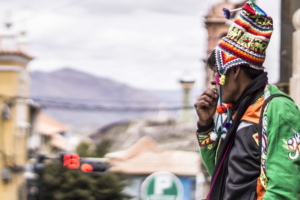Progress in Bolivia’s Water Access
 In the 2010 renowned film, “También la lluvia” (Even the Rain) by Icíar Bollaín, two directors travel to Bolivia to shoot a film about Christopher Columbus and the Spanish exploitation of the New World. However, as they begin filming, they find themselves within another narrative of exploitation: the Water War protests of the year 2000, where the local population is fighting against the privatization of water resources in response to Bolivia’s water access crisis.
In the 2010 renowned film, “También la lluvia” (Even the Rain) by Icíar Bollaín, two directors travel to Bolivia to shoot a film about Christopher Columbus and the Spanish exploitation of the New World. However, as they begin filming, they find themselves within another narrative of exploitation: the Water War protests of the year 2000, where the local population is fighting against the privatization of water resources in response to Bolivia’s water access crisis.
The release of Bollaín’s film coincided with the 10-year anniversary of the Bolivian crisis, reminding the public of this devastating chapter in history that was perhaps forgotten outside of Bolivia. Beyond educating many about a dark time in Bolivia’s past, the movie encourages a necessary discussion about Bolivia’s current water access situation.
The Current Situation
Despite the victories achieved during the Water Wars, Bolivia continues to struggle with water challenges. Rapid urbanization, natural disasters and mismanagement of water resources contribute to water scarcity in various regions of the country. Rural communities are particularly vulnerable, facing difficulties accessing clean and reliable water sources.
Steady Progress
However, while it is still an issue, it must be noted that there has been significant progress in achieving water access in Bolivia. In 2020, 84.7% of the population had access to improved sources of water, and 62.5% had access to basic sanitation. The country continues to implement different drinking water and sanitation programs in both urban and rural areas which work to increase access to these resources and their quality.
Furthermore, the government has set a goal by 2025 that works for access to essential basic services with an emphasis on vulnerable groups, with the management of water prices and free access for groups affected by the COVID-19 pandemic crisis.
Bolivia’s Help
The international community has committed to assisting in Bolivia’s efforts. The Inter-American Development Bank (IDB) approved a line of credit of up to $500 million to enhance Bolivia’s water access and security and help secure a sustainable supply of irrigation and drinking water. The objectives of the investment are to increase food security by 25% and raise the net agricultural income of family farms by 36%. The investment will be directed toward mechanized irrigation systems for around 12,500 families from the most vulnerable communities that depend on agriculture to survive. After the new systems, these farms will be able to irrigate an additional 13,871 hectares.
Progress outside of government policy is also being made. The NGO Water for People, which has been working in Bolivia since 1997, has made tremendous efforts. Water for People implements piped water supply and educates communities on how to maintain them for the long term. In addition, the organization helps construct hygienic hand washing stations and toilets in schools.
Looking Ahead
Agriculture is the primary economic activity of 77% of the country’s rural population which makes up Bolivia’s most vulnerable communities. Thus, water scarcity is devastating for Bolivia’s most vulnerable. Bolivia has made significant improvements since its water crisis at the beginning of the century, but progress is still needed. Bolivia’s future has hope as the international community and multiple NGOs work to assist them in their struggle.
– Cameron Alcocer-Venables
Photo: Flickr
